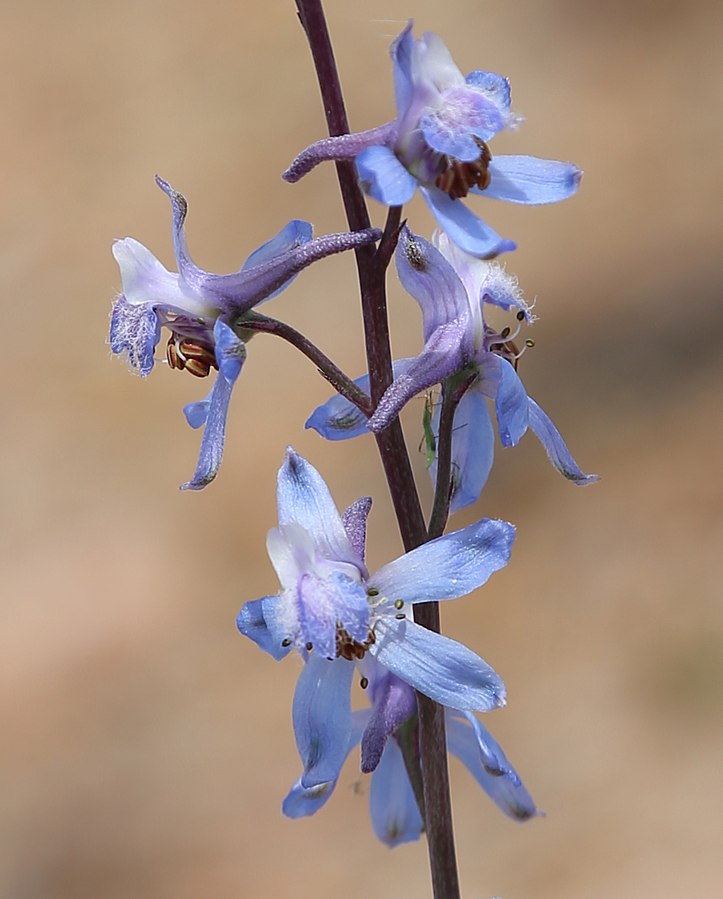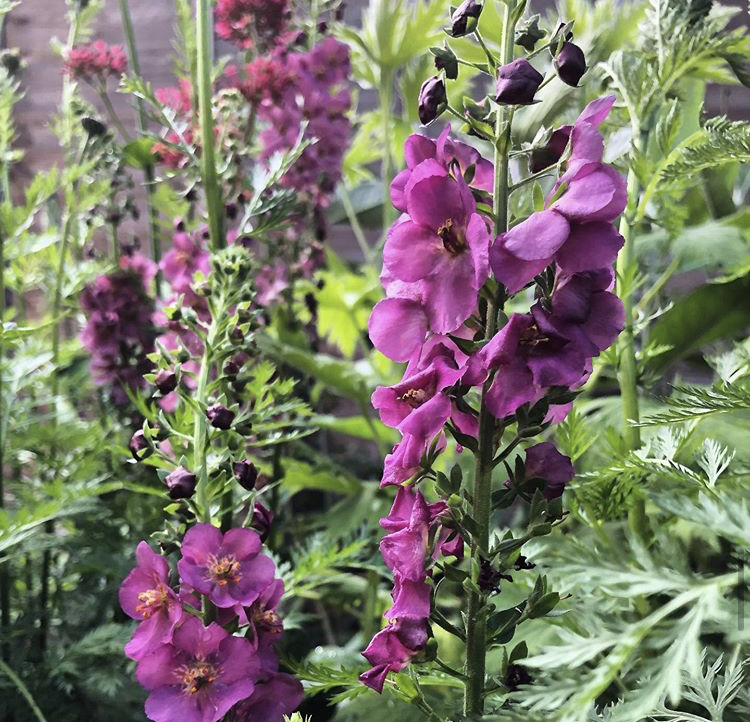
It’s not uncommon, on your birthday, to receive a present featuring your birthstone or zodiac symbol. However, few people know about their birth flower. In this new series, the first Grow and Tell post of each month will introduce you to its corresponding birth flower, according to Joseph Hammer-Pugstall’s The Language of Flowers.
July, in the Northern Hemisphere, is associated with the peak of summer. When I think of summer, I think of laying somewhere warm, under a big blue sky, looking out into an endless ocean, so it’s no wonder to me that July’s birth flower is the deep blue Delphinium (Delphinium sp.).
The name Delphinium comes from the Greek word ‘delphínion’ (‘δελφίνιον‘) meaning ‘dolphin’. It gets this name from the shape of its flowers, which are said to look like leaping dolphins. This, to me, makes the Delphinium an even more appropriate choice for July.
Delphiniums have had many unusual uses over the years and across cultures. In Transylvania they were used to deter witches from entering stables. In the Dark Ages it was believed their seeds turned you invisible. Although I wouldn’t recommend trying it, it was also believed that looking through Delphiniums on Midsummer could cure poor eyesight for a year.

Common Columbine 
Delphinium parishii
Blossoming in June and July, this perennial species produces beautiful flowers in a range of blues, purples and whites. You may be surprised to know that this genus actually belongs to the Buttercup family (Ranunculaceae – “ra-nunk-u-lacey”).
I covered another unusual Ranunculaceae species in a previous post: Common columbine (left image above). Looking at the two, the shape of the flowers and the presence of the spur demonstrates their relatedness, but I also find it interesting that they are both named after animals that they look like: Columbines after doves and Delphiniums after dolphins.
Just like their Columbine cousins, Delphiniums are a popular plant among bees and butterlies. The nectary spur provides ample food for busy pollinators in your garden and are a common suggestion for people trying to support and promote them.
However, like many of their Ranunculaceae relatives, Delphiniums are toxic if ingested, which has historically been a problem for cattle farmers in western USA. However, they do have their uses. As well as being a widely cultivated species, Delphinium flowers can be juiced and mixed with alum, a salt, to produce a blue ink.

It seems funny to start this series in the middle of the year, but what a beautiful flower to kick off with. Delphiniums are a staple in many gardens, bouquets and arrangements, and it’s easy to see why. Their delicate, richly coloured petals stand out among their foliage throughout July and I’m happy to welcome them back every year.
Image credits
Delphinium featured image: Gerhard G. from Pixabay
Delphinium hero image: Margaret Van de Pitte from Pixabay










Leave a comment